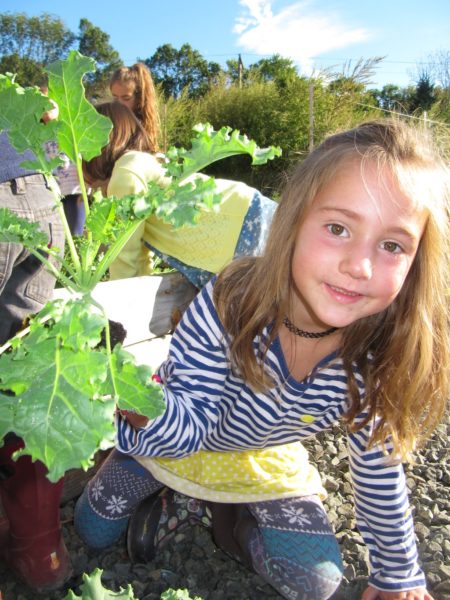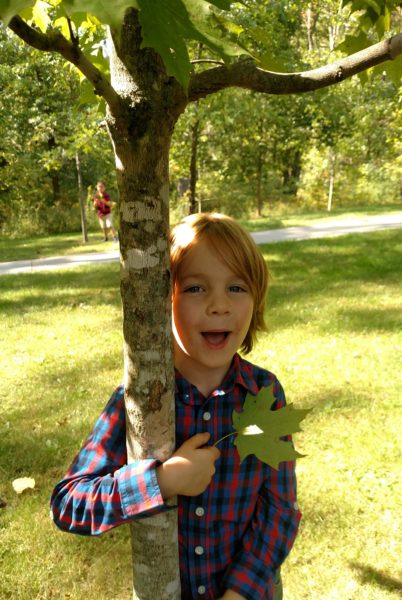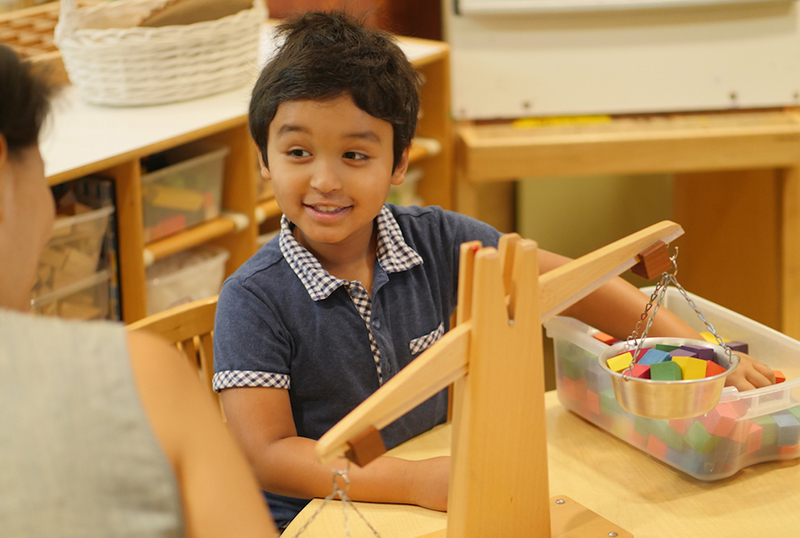Since Systems Thinking was born at MIT in the 1950s, colleges, governments, and Fortune 500 companies have used this transformational approach to problem-solving to look beyond basic “cause and effect.” A few innovative schools, like Willow, have even adopted systems thinking into the curriculum for elementary and middle school students. But how early can this approach to critical thinking be taught? Can students as young as kindergarten learn to use systems thinking?
“Absolutely,” says Francisco Ayala, Willow’s Head of School. “At this age, children begin to understand that they are part of something greater than themselves. When kindergarteners learn that they are involved in a community that is only as strong as its parts, they practice the habits of systems thinking in a very age-appropriate, relevant way.”

Kindergarteners help harvest food for Willow’s annual Harvest Soup celebration.
Throughout their elementary and middle school years, Willow students apply systems thinking to a number of in-depth studies, from the Agricultural Revolution to slavery in Colonial America. Using tools like behavior over time graphs, connection circles, causal loops, and iceberg charts, students learn about the interconnected and interdependent systems that we are all a part of and gain a better understanding of how individual actions have multiple impacts. Systems thinking helps students anticipate those impacts, understand how to affect change, and seek solutions that are beneficial for all parts of a system.
In kindergarten, Systems Thinking starts with the in-depth study of self that expands to the communities (or systems) they are a part of, such as their classroom, school, family, and the world.
“We pay a lot of attention to each child’s choices and the fact that those choices have consequences that can be good or harmful to the classroom or school community,” kindergarten teacher Julie Kim explained. “When our kindergarteners, for example, harvest vegetables from the school’s garden for our annual Harvest Soup celebration, they understand that they are a part of something bigger and what they do matters. That’s essential if you want students to become systems thinkers.”
Kindergarteners use systems thinking in their classroom to understand how their actions directly impact each other. “For example, if a kindergartener does not put his work materials away, another child will not get to work with them,” added Julie. “Even something as simple as dropping a pencil on the floor and not picking it up impacts himself (for the next time he needs it) or impacts another child because he or she has to pick it up. In our everyday interactions, the child learns that he is connected to others by his behavior. He learns to take care of himself, care about others, care about nature, care about safety, and care about learning.”

Kindergarteners learn about ecosystems in science, adopting trees on campus.
The science curriculum also supports systems thinking by introducing kindergarteners to interdependent relationships in the natural world. “When we study the forest, we learn that everything is interdependent,” said Marissa Mizeski, Willow’s lower school science teacher and naturalist. “Students understand how trees are connected to an ecosystem where plants, animals, and humans rely on each other. They make personal connections at a deep level, expressing gratitude for the many gifts that trees give us and the world.”
Kindergarteners’ yearlong study of their role in communities culminates with the play, The Rainbow People, where kindergarteners demonstrate their understanding that humans are distinct beings with similar needs, feelings, and desires.
“Kindergarteners start systems thinking with these simple, yet profound, lessons that are extremely relevant to their day-to-day lives,” said Francisco. “In this way, kindergarten at Willow prepares students to study and grapple with the complex problems, such as climate change, inequality, and food and water insecurity, that they’ll encounter as they move through the grades at Willow and beyond.”
Want to learn more about Systems Thinking? Request our FREE guide, and it will be delivered to your inbox immediately!

